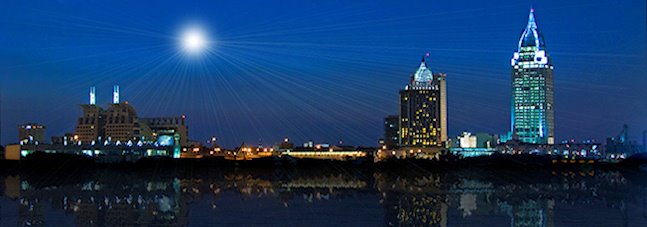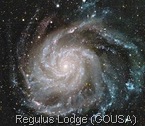
A small, but influential group of philosophers, scholars, and writers promoted after 1685 the cultural movement of the Enlightenment, the critical spirit which sought to apply the reasoning and experience so fruitful in the natural sciences to understanding humans as individuals and in society. This critique of religious traditions and philosophical authority became the most important component of modern European secular (as contrasted to religious) culture. Indeed, Enlightenment political ideals of human rights, the economic philosophies of liberalism, and cultural practices of tolerance have triumphed in spectacular fashion in the twentieth century.
Contemporaries who were religious or frightened by the French Revolution already in the eighteenth century condemned the Enlightenment as morally chaotic and politically subversive. Marxists brushed it off as "bourgeois ideology." In the last twenty years, many historians and philosophers have launched a full-scale attack on the Enlightenment from a "post-modernist" perspective. They have condemned it for its Euro-centrism and universalism in a world where the European model is no longer unquestioningly accepted, for its naive belief in progress, and most damagingly, for its steadfast belief in universal foundations of truth and in the universal reliability of scientific method.
As we enter into the 21st century Freemasonry stands alone as the last bastion of hope against the darkness imposed upon mankind by the Post Modernists. It continues to point the way to a higher and more enlightened existence for all people through virtue, knowledge and tolerance.
In 1660 the largely Masonic "Invisible College" gained the verbal support of the King, and Sir Robert Moray became its president. Two years later the King sealed its charter and it became the Royal Society, the first modern scientific think tank. The motto of the society was "Nullius in verba" which is translated as "Nothing by mere authority". Thus began the Age of Enlightenment, which opened the way to our scientific and technical advances.
The philosopher and member of the Royal Society, John Locke, in his 1690s Letters Concerning Toleration, laid the foundations of law which now protect freedom of thought. Locke argued for the separation of religious authority from civil authority, so that a person's religious persuasion could not be held against them in court. This is now considered a fundamental human right. Much of Locke's philosophy influenced and was influenced by Freemasonry and the Royal Society.
The French Freemason and philosopher, Voltaire, espoused Locke's work and Masonic ideas in Europe in the early 1700s. Later, Jean-Jacques Rousseau, would clearly define the aims of the movement.
The age of Enlightenment was humanitarian as well as cosmopolitan; enlightened despots promoted social reform, and movements such as Freemasonry, built on humanitarian ideal of a universal brotherhood, spread rapidly throughout Europe and numbered among its adherents kings, poets and composers.
The pursuit of learning and love of art became more widespread, particularly among the expanding middle class. This made demands on writers and artists that affected both subject matter and presentation. Philosophy, science, literature, and the fine arts began to address a general public beyond the experts and connoisseurs. Novelists and playwrights began to depict everyday people with everyday emotions. This had far-reaching effects in the world of Freemasonry.
In Living the Enlightenment, Margaret C. Jacob (Professor of History at the University of California, Los Angeles) argues that the hundreds of Masonic lodges founded in eighteenth-century Europe were among the most important enclaves in which modern civil society was formed, creating in France, the Netherlands, Belgium, and Britain new forms of self-government in microcosm, complete with constitutions and laws, elections, and representatives.
Some of the greatest names of the American Revolution were Masons: Ethan Alien, Edmund Burke, John Claypoole, William Daws, Benjamin Franklin, John Hancock, John Paul Jones, Robert Livingston, Paul Revere, Colonel Benjamin Tupper, and George Washington. Of the 56 signers of The Declaration of Independence, eight were known Masons and seven others exhibited strong evidence of Masonic membership. Of the forty signers of the Constitution, nine were known Masons, 13 exhibited evidence of Masonic membership, and six more later became Masons. There were many other Masonic influences in early American history: (1) Lafayette, the French liaison to the Colonies, without whose aid the war could not have been won, was a Freemason; (2) the majority of the commanders of the Continental Army were Freemasons and members of "Army Lodges"; (3) most of George Washington's generals were Freemasons; the Boston Tea Party was planned at the Green Dragon Tavern, also known as the "Freemasons' Arms" and "the Headquarters of the Revolution"; (4) George Washington was sworn in as the first President of the United States by Robert Livingston, Grand Master of New York's Masonic lodge, and the Bible on which he took his oath was from his own Masonic lodge; and (5) the Cornerstone of the Capital Building was laid by the Grand Lodge of Maryland.
On 8 December 1730, Benjamin Franklin printed in his newspaper, The Pennsylvania Gazette, the first documented notice about Freemasonry in North America. Franklin's article, which consisted of a general account of Freemasonry, was prefaced by the statement that 'there are several Lodges of FREE MASONS erected in this Province'... Franklin himself became a Freemason in February 1731, and Provincial Grand Master of Pennsylvania in 1734. That same year, he ushered into print the first Freemasonic book to be published in America, an edition of Anderson's Constitutions.
On September 1, 1752, a new lodge of Masons held its first meeting in Fredericksburg and soon attracted members. Under Daniel Campbell as Master, a class of five was initiated on November 4. George Washington, one of this group, paid his initiation fee of £23s. as an Entered Apprentice. Later, Washington would comment to King David Lodge in Newport, Rhode Island, "Being persuaded that a just application of the principles on which the Masonic Fraternity is founded must be promotive of private virtue and public prosperity, I shall always be happy to advance the interest of the Society and to be considered by them as a Brother."
Traditional Cosmopolitan Freemasons are a continuation of the ideals and philosophy of the great minds of the Age of Enlightenment. The Grand Orient of the United States of America continues in their footsteps, keeping alive the Masonic ideal of a Universal Brotherhood of all humanity.
 After a slow start our Triangle is picking up steam and starting to get noticed by even some of the hardcore mainstream and Prince Hall Masons in Mobile.
After a slow start our Triangle is picking up steam and starting to get noticed by even some of the hardcore mainstream and Prince Hall Masons in Mobile.



